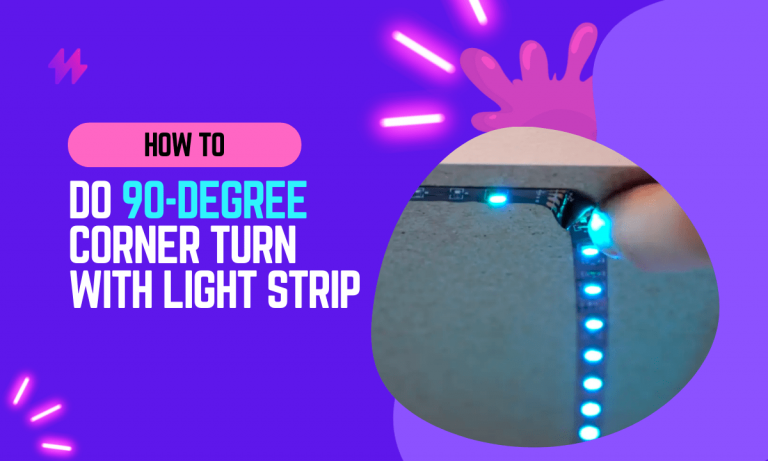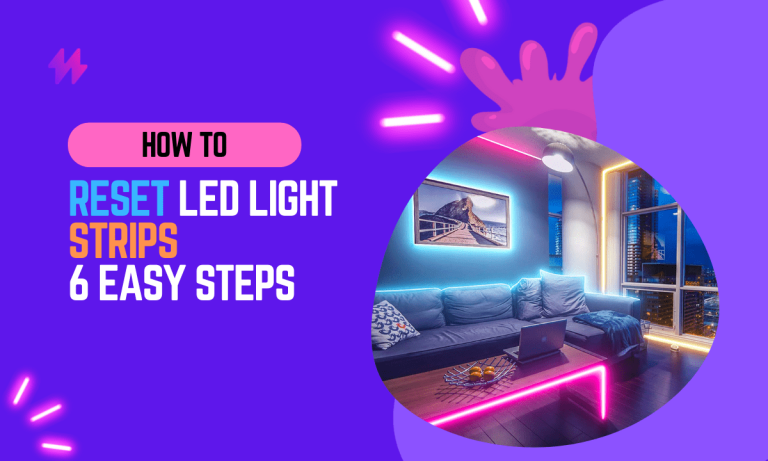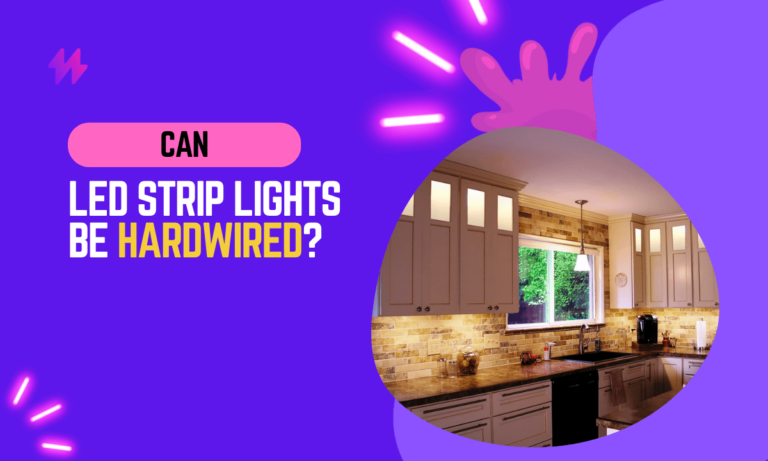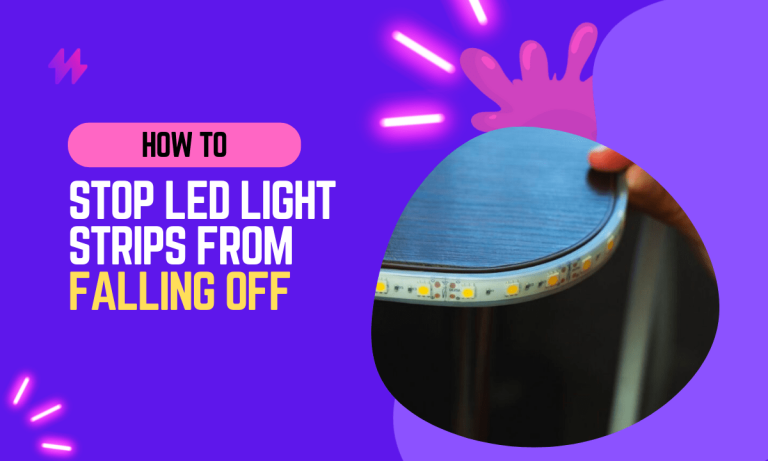Can You Sleep with LED Strip Lights On?

LED strip lights are a must-have for home lighting, not only because of their energy efficiency but also due to the variety of colors they come in. Their versatility allows them to be used practically anywhere creating an array of possibilities that will brighten up any space! But can you sleep with LED strip lights on, and are they safe to use in a bedroom?
In this LED guide, we will investigate the implications LED strip lights have on your health and safety while sleeping, as well as a few tips to help you establish an ideal sleep environment with them.
Are LED Strip Lights Safe to Sleep With?
Yes, LED strip lights are safe to sleep with. LED strip lights are a much safer alternative to traditional incandescent and fluorescent lighting, as they produce minimal heat which reduces the risk of fire. Additionally, Unlike other lighting alternatives, LED strip lights are free from hazardous chemicals like mercury and offer a safe illumination solution.
Nonetheless, there are some potential health risks to bear in mind when sleeping with LED strip lights on. The most noteworthy concern is the effect of LED lighting on melatonin production, which can disrupt your sleep cycle.
Exposure to blue light, in particular, has been shown to suppress the production of melatonin, which can make it more difficult to fall asleep and stay asleep.
Tips for Using LED Strip Lights in the Bedroom
If you’re looking to bring a touch of comfort and relaxation into your bedroom with LED strip lights, here are some tips on how to create an atmosphere that’s perfect for sleeping:
Choose warm-toned LED strip lights
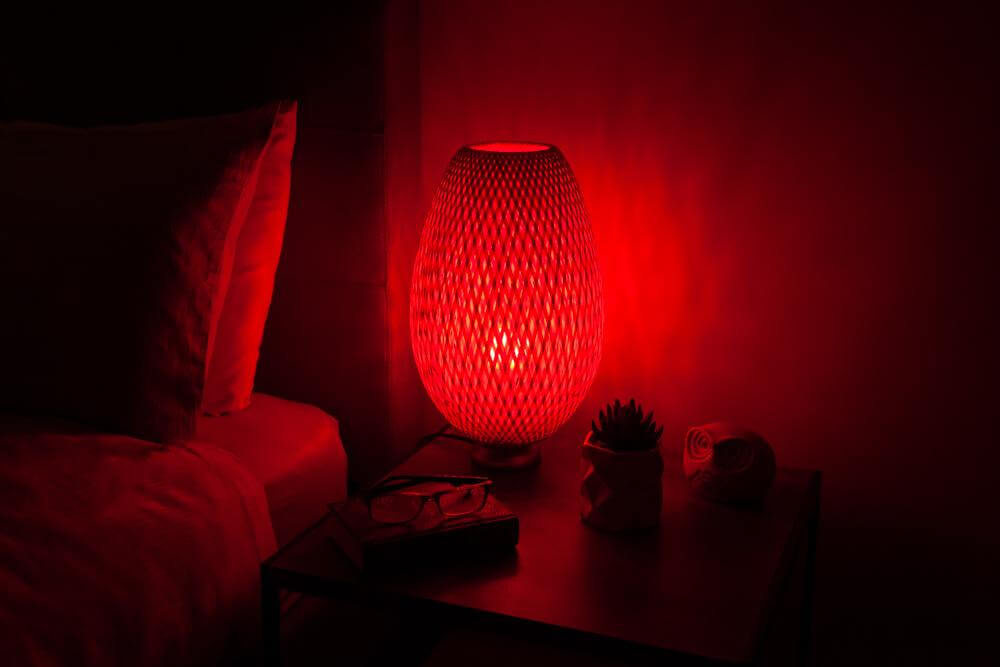
To reduce the effect of LED lighting on melatonin production, select warmer-hued LEDs such as red, orange, or yellow as these are the best LED light color to sleep. Studies have proven that these hues cause much less disruption to melatonin levels than blue or white light does.
Use a dimmer switch
To maintain a peaceful sleep environment and reduce the effect of LED lighting on your melatonin production, install a dimmer switch to adjust the brightness. This way, you’ll be able to set the lights at an optimal level that is comfortable for you while still preserving your natural circadian rhythm.
Also read: Can LED lights be left on 24×7?
Avoid using LED strip lights close to your bed
To preserve the quality of your sleep, refrain from having LED lights placed above or next to your bed. Rather than suffering through their harsh glow overnight, use them in other parts of the room – like behind a headboard or around the walls. This way you can still enjoy all that LEDs have to offer without sacrificing restful slumber!
Turn off the lights before going to sleep
If you want to ensure restful sleep and avoid the disruption caused by LED lights, consider turning them off before bedtime. Doing so will create a dark and peaceful bedroom environment that promotes quality slumber. Also, you can use timer switches to automatically turn off your LED strip lights at night, so you won’t have to worry about manually turning them off.
Conclusion
In conclusion, sleeping with LED strip lights on is a matter that hinges on personal comfort and the potential impact of light exposure on sleep quality. While LED strip lights can create a relaxing ambiance in a room, it’s important to consider the color temperature of the lighting used. Research suggests that exposure to blue light, which is prevalent in cooler LED settings, can inhibit the production of melatonin, the hormone responsible for regulating sleep cycles. This disruption can lead to difficulties in falling asleep or staying asleep. Thus, if one chooses to use LED strip lights in the bedroom, opting for warmer tones (like those near 2700K) might mitigate some of these effects, as warmer colors are less likely to interfere with melatonin production.
Furthermore, the intensity and positioning of LED strip lights can also play significant roles in their suitability for night-time use. Dimmer lights and those installed in a way that they do not shine directly in the eyes are preferable for maintaining a sleep-conducive environment. Some LED strip lights come with features such as dimmers or timers, which can be set to turn off automatically, ensuring that the light does not disturb deeper stages of sleep. For those sensitive to light while sleeping, it may be beneficial to consider using these LEDs as a tool for winding down before bed rather than a constant overnight presence. Ultimately, whether or not one should sleep with LED strip lights on is a personal decision that should factor in individual sleep habits, the specific characteristics of the LED lights used, and the overall impact of the environment on sleep quality.

